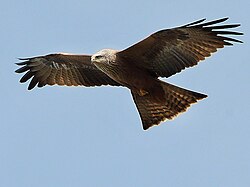
Shite-hawk (also spelled shitehawk) or shit-hawk or shitty hawk [1] is a slang name applied to various birds of prey that exhibit scavenging behaviour, originally and primarily the black kite, although the term has also been applied to other birds such as the herring gull. It is also a slang derogatory term for an unpleasant person.